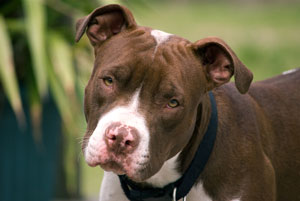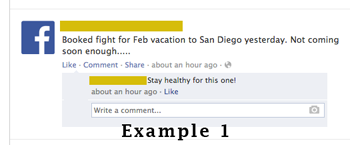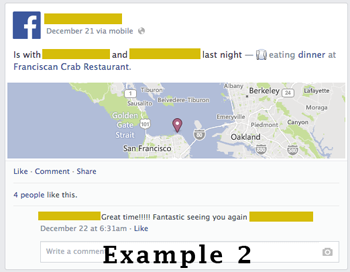Backyard safety concerns for your loved ones.
As the weather warms and children start to play outside, homeowners should consider the liability concerns surrounding backyard playground equipment. Seemingly harmless items such as swing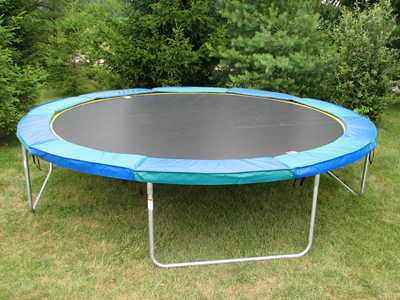 sets, slides, swimming pools, diving boards, trampolines or sandboxes can be a source of danger for small children and adults alike, and may open the homeowners to lawsuits and other legal action in the event of injury. Homeowners should seriously consider adding a $1,000,000 or higher Umbrella Liability Policy to their portfolio to increase protection against Liability claims if they have any of these items in their yards. This will minimize their out of pocket financial responsibility in the event of injury or death.
sets, slides, swimming pools, diving boards, trampolines or sandboxes can be a source of danger for small children and adults alike, and may open the homeowners to lawsuits and other legal action in the event of injury. Homeowners should seriously consider adding a $1,000,000 or higher Umbrella Liability Policy to their portfolio to increase protection against Liability claims if they have any of these items in their yards. This will minimize their out of pocket financial responsibility in the event of injury or death.
Slides are a major source of injuries in the backyard. Metal slides are particularly dangerous, as they can easily overheat in the sun and cause severe burns on small children, but plastic slides can still cause injuries. Children may fall over the side or attempt stunts on the slide. This type of equipment can be difficult to secure properly, which creates even more leeway for lawsuits. In especially hot weather, even plastic slides can heat up to unsafe temperatures and cause burns on small children.
Jungle gyms and play sets can also be put together incorrectly if assembled by an amateur, and caution should be used to prevent collapses. Play sets should always be placed on level ground, preferable with a soft, cushioned substrate surrounding the play area. Note that the substrate should always be placed after the play set has been secured and properly anchored to the ground. See manufacturer recommendations for information on anchoring and securing. Temperatures are a consideration for all play set equipment, regardless of the material it is made from. Metal bars get especially hot and can cause burns.
Before digging in your yard to install your playset or swimming pool, ensure you call your utility companies to have lines marked. Failure to do so can result in damage to electric, sewer, internet, cable, and other lines, and can come with heavy fines and extensive damage to structures. It is also advisable to visit your local city hall to determine if any variances are needed to construct play structures in your backyard. If you have a homeowner’s association, they’ll also need to be contacted, as some HOAs have strict rules regarding play structures in yards and require permission, or outright ban their construction. Taking these steps prior to initiating any construction can keep you from paying fees or having to demolish your play structure.
Trampolines are another dangerous backyard toy for small children. All trampolines should have safety netting, and weight limits should be strictly followed. Children should be properly instructed prior to jumping on the trampoline restrict the stunts or any dangerous jumping activities.
Swimming pools carry very specific dangers, regardless of their size. Ensure all pools are enclosed with a tall fence and a locked gate, or are drained or covered nightly with any ladders or equipment stored separately. Individuals who cannot swim should never be near pools without supervision, and home owners should thoroughly check with their homeowners agent or their insurance policy itself to ensure their pool and any liability connected in injury or death is covered adequately. Care should be taken to restrict access to your pool to unauthorized users, as inebriated individuals are among the most likely to fall prey to an injury or fatal accident as a result of access to an unsupervised pool.
All equipment should be inspected frequently for loosened joints, failure of structural integrity, splinters, and other damage resulting from use or weather. Prevention is the best way to ensure injuries are kept to a minimum. In addition to inspection, children should be trained to report any damage they notice or cause while playing to an adult immediately. Equipment should be repainted frequently to reduce damage, wear, and the possibility of splinters. If possible, look to replace wooden structures with plastic, especially in humid areas or places with large wood eating insect populations.
If cooking or burning fires in your backyard, always remove dry debris from the area before lighting the fire. Check that your fire will have adequate ventilation and is not against flammable materials. Use a screen or other means to keep small children and pets away from the fire, as they may not understand verbal warnings about the heat from fires. Always be aware of grease, and have a fire extinguisher available to put out unexpected sparks or fires. Check to ensure your fire extinguisher is properly rated for the type of fire you will be dealing with- grease fires must be put out with a different type of extinguisher than those burning wood or paper.
Homeowners insurance generally comes with some liability coverage for individuals visiting the home, but this coverage may or may not be adequate to protect your assets in the event of a lawsuit or claim. Clients can visit their Massachusetts insurance agent for information on how to document valuables, determine net worth, and calculate how much insurance coverage is needed to limit liability.
Umbrella policies are a great option for those seeking a additional layers of liability protection, especially since homeowners policies are limited on what they will or will not cover.
Dog breeds that could raise your insurance rates.
Your dog might be your best friend, but chances are it is not best friends with everybody who visits your home. People adopt dogs for many reasons, including companionship, protection and breeding. Some dogs are put to work at an early age guarding livestock or being watchdogs, but most dogs earn their living loving us as much as we love them.
All homeowners are aware that they have to carry insurance to protect themselves in case someone gets injured on their property by an overprotective dog. But the truth is that certain dog breeds have a bad reputation for being too aggressive.
If you’re planning to adopt a dog, you should consider how your new pet could affect your insurance rates. Some breeds can raise your rate, and other breeds could cause your insurance company to cancel your policy. Your dog may be the sweetest little buddy you’ve ever had, but these dog breeds, in particular, are noted for attacking people and other dogs. You might want to rethink adopting a pooch from this list.
• American Pit Bulls and Staffordshire Terriers share a similar appearance and the ability to cause serious harm. They can be sweet and affectionate one minute and vicious the next. Their size and jaw strength have put them front and center among dogs that injure and kill. They’re even notorious for attacking their owners. They were responsible for over 60 percent of the 38 fatal dog attacks in the U.S. during 2012.
• Dobermans used to be extremely popular, but after a rash of attacks in the 1970s, many people have shied away from the breed. They tend to be very protective and aggressive, which makes insurance companies fear the worst.
• Rottweiler’s aren’t as tall as Dobermans, but they are stockier, and their jaws generate over 300 pounds of pressure per inch. They can quickly and easily break a person’s arm or seriously injure or kill a child.
• Chows have earned a reputation among vets as being unpredictable. That unpredictability makes them a very dangerous breed to own, especially around children.
• German Shepherds make great police dogs and pets. However, they are territorial and protective. If unfamiliar relatives, friends or strangers come calling, they might be met by a not-so-welcoming host.
Almost any dog can be provoked, but the ones on this list are notorious. Keep that in mind when you’re choosing a new pet to join your family.
Oh Deer, Tips for avoiding Deer Collisions.
Oh Deer, It’s That Time of Year Again in Massachusetts and Connecticut
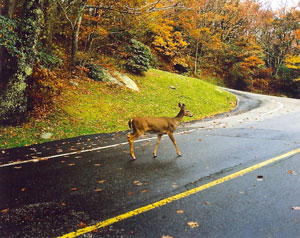 The arrival of the cooler weather marks the return of cozy sweaters, shorter days, pumpkin-flavored everything and – if you happen to live in Massachusetts or Connecticut – deer mating season. While a welcome sight in your backyard, packs of deer are a big concern on the road. If becoming one of over a million drivers who are involved in deer collisions every year isn’t on your wish list, now is a great time to take a refresher course on accident prevention. Below is a quick rundown of what you need to know to stay safe behind the wheel all season long.
The arrival of the cooler weather marks the return of cozy sweaters, shorter days, pumpkin-flavored everything and – if you happen to live in Massachusetts or Connecticut – deer mating season. While a welcome sight in your backyard, packs of deer are a big concern on the road. If becoming one of over a million drivers who are involved in deer collisions every year isn’t on your wish list, now is a great time to take a refresher course on accident prevention. Below is a quick rundown of what you need to know to stay safe behind the wheel all season long.
- Keep Your Eyes Open for More. Like most humans, deer love company. Frequently traveling in packs, their unpredictable numbers can instantly throw surprised drivers off track. If you spot a pair of antlers in the distance, assume that many more are hiding in the shadows.
- Check the Clock. Deer are especially active at sunrise and at dusk. That doesn’t mean you won’t see any earlier in the day or late at night, but that’s when you’re statistically the most likely to cross each other’s paths.
- Buckle Up. Hitting a deer is a serious business. To avoid life-threatening injuries, always wear your seatbelt, even if you’re just driving to the nearby grocery store. Since local back roads are quieter than highways, they’re more attractive to deer herds on the go, so it’s important to always be on alert no matter where you’re going.
- Find the Middle Ground. When you’re traveling on roads with multiple lanes, create an invisible buffer zone by merging into the middle lane. Because any stray deer will have to enter the roadway from one of the sides, driving in the center automatically gives you more time to react.
- Read the Road’s Sign Language. Now that deer mating season is about to be in full swing, paying attention to yellow diamond signs that designate common corridors for traveling deer is a safety must.
- Stay Calm and Collected. If you do see a deer, honk your horn and drop your speed as slowly as you can to avoid a collision with the driver behind you. Although swerving will probably be your first instinct, it can throw you off the road or right into the path of the fast-moving deer you were trying to avoid.
While following the tips above will decrease your chances of accidentally hitting a deer, they aren’t foolproof. Because collisions are sometimes unavoidable, you need to be prepared in case the unexpected happens. If you hit a deer, find a safe spot on the shoulder to assess the damage and call the police. As tempting as it can be to check on the deer, leave that job up to the pros. When hit, deer can become confused and aggressive, making the road conditions more dangerous for other drivers and putting you at risk for serious injuries.
Tips for the cyclist who spend a lot of time on the roads.
Protection Tips for Cyclist
 It’s much more dangerous to ride a bicycle than it is to drive a motor vehicle. In the year 2010, nearly 800 people lost their lives in bicycle accidents in this country, and 515,000 others needed to be taken to the emergency room. These unfortunate statistics highlight the reasons that cyclists need to pay close attention to the ways in which they can protect themselves.
It’s much more dangerous to ride a bicycle than it is to drive a motor vehicle. In the year 2010, nearly 800 people lost their lives in bicycle accidents in this country, and 515,000 others needed to be taken to the emergency room. These unfortunate statistics highlight the reasons that cyclists need to pay close attention to the ways in which they can protect themselves.
Along with the physical injuries that you may sustain, you also have to think of the financial consequences of being involved in a collision. You cannot anticipate everything, but you can put together a protection plan that will ensure that you and your family will not suffer financial hardship if an accident occurs.
Uninsured Motorist coverage on your Auto Insurance policy can help
Although it is required that you carry liability insurance (in most states), not everyone follows the law. If you are hit by an uninsured driver, you may end up paying your own medical bills if the at-fault driver has no insurance. However, did you know your auto Policy’s uninsured motorist coverage will pay medical and other expenses if you are injured while riding your bike? Also, keep in mind it is very inexpensive coverage so keep those limits at least as high as your bodily Injury Limits.
Look at your Underinsured Motorist Insurance limits too while you are at it
Many people only purchase minimum Bodily Injury limits and many more carry low limits in an effort to keep their costs down. Unfortunately, if you are hurt in a collision with an underinsured motorist (someone that does not have enough coverage to pay for your bills), you could be stuck paying for them on your own. This is where your underinsured motorist coverage limit comes into play. You can protect yourself by carrying good high limits on your own policy and, once again, this coverage is relatively inexpensive.
Liability Insurance
It doesn’t happen that often but consider this…..what if you were the cause of an accident that involved serious bodily injury, either to another cyclist or the occupants of a motor vehicle? It’s possible that you could be determined to be the cause of the collision and in that case, you would responsible for paying the injured party’s medical and property repair bills. If you have a home, condo or renter’s policy, you will be protected in this situation. You can also purchase an additional layer of liability protection, a so called umbrella policy, to supplement the insurance that you already have.
Disability Insurance
Most people feel somewhat secure knowing that they have disability insurance through their jobs. If you are seriously injured that just might not be enough. If you require more than three to six months to recover, your work benefits might very well expire before you are able to return to work. Optional disability insurance can extend your coverage and extend the time limit, all the way out to permanent disability protection.
Life Insurance
Cyclists take a risk every time they travel and share the roadway with motor vehicles yet they are generally unprotected on the insurance end. If you are hit by a moving vehicle, you can expect to be injured and it is usually just a question of how serious. The possibility also exists that you could lose your life in such an accident.
If the worst were to happen, the least you would want is for your family to be able to continue without your salary. The mortgage still needs to be paid, college obligations will still need addressing and the groceries will still cost money. Life insurance can ensure that all of these responsibilities can and will continue to be taken care of.
The purpose of this blog is to create a pause and an opportunity for thoughtful reflection into the status of our lives. We hope the information provided here is helpful in some way. If you have questions that you feel could benefit from a one on one discussion please do not ever hesitate to call upon us.
Dan O’Connor
What NOT to share on social media websites if you are planning a vacation.
You have been planning this vacation for what seems like forever, and now the time finally comes where you can leave everything behind….. work and personal responsibility will be a distant memory for at least few days……RIGHT??? You have so many things to do, such as pack your belongings, pay the bills and, most important of all, spread the news of your vacation to all your friends on your social network….. RIGHT???? Well WRONG. Better think twice about that last item. If fact, if you are smart scratch that all together. Before you tell everyone on Facebook, Twitter and other sites of your planned time away from home, consider everyone else who might read your posts.
According to a story in a local Daily Newspaper, two men broke into an elderly woman’s home after her granddaughter had posted information, including pictures of casino winnings on Facebook. Luckily, the men left without harming the woman, but it makes the point that you simply cannot put personal information like this on a social network. Even if you set your status updates to private, almost anyone can access your information once you post it online.
If you still don’t believe it, visit PleaseRobMe.com. to drive home this point a little more. We all want to share the excitement of special occasions with our friends but do it over the phone or better yet….wait untill you get back. Another thing, don’t tell everyone with a message on your answering machine or a voice mail either. Sharing pictures of your vacation on Instagram can wait until you make it safely back home. If you value your home and property, understand the dangers of posting your personal information online. In the “old” days, we had to tell our children not to talk to strangers. Now, we have to add the part about not sharing vacation plans on social media either.
If you have 1,000 friends on Facebook or hundreds of Twitter followers, consider how closely you know each of those people. Only tell your closest friends, family members and neighbors of your planned absence away from home. If you accidentally leak your vacation plans online, update your status and comment so that it looks as though you have made it back home. It’s also a great idea to have a home security system and, of course, homeowner’s insurance that is paid in full.
It is never too early to winterize your home.
With Old Man Winter quickly approaching, now would be a great 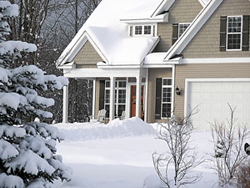 time to get prepared,by taking certain steps and you can lessen the chances of a loss to your home due to inclement weather:
time to get prepared,by taking certain steps and you can lessen the chances of a loss to your home due to inclement weather:
- Verify that your furnace is in proper working order by contacting a heating specialist for an inspection. Heating device malfunctions, including those involving space heaters, are the second leading cause of fire deaths in the U.S. Also, most experts recommend vacuuming your heating ducts every five years.
- Check your plumbing system closely since burst water pipes can spew hundreds of gallons of water into your home. Use heat tape on any pipes exposed to extremely cold weather. Learn how to shut your water off to minimize damage from burst pipes.
- Replace any cracked or missing roof shingles and verify that flashing around the vent pipes or chimney is watertight. Roof too steep? Have a reputable contractor do the repairs for you. The cost to do so certainly would be less than the deductible under your homeowners policy should a loss occur.
How to avoid damage from an ice dam on your roof
Here’s how ice-damming becomes a problem
- Home heat rises and warms the roof underside, melting exterior snow and ice.
- Water running down the roof refreezes at the cold roof edge, building ridges to form an ice dam.
- Water can’t drain and accumulates, backing up and seeping below shingles, causing ceiling, insulation, and wall damage.
- Roof loading is further increased and can lead to collapse.
Here’s the solution
- Have your roof and gutter systems inspected regularly for tightness and drainage.
- Remove any debris or obstructing tree branches.
- Consider having additional insulation installed above ceilings or having roof vents upgraded to prevent warm air from rising to the roof.
- If problems persist, have roof heating cables installed.
Winter weather losses that might have been prevented
- At owner’s secondary home, he sets heat at 50 F, but because plumbing is located behind poorly insulated external wall, pipes burst due to extreme cold.
- Ice damming: Owner fails to clear debris from gutters, and melting snow backs up, freezes, then pushes water under shingles into home, causing severe water damage.
- Radiator pipes along non-insulated wall freeze and burst due to extreme cold and wind chill, causing basement to flood.
Source: Harleysville Risk Services
How solar panels and going green can add value to your home.
Solar energy can be a smart decision and one with many advantages. When you make use of pure sunshine to power your home, the  ethereal feel-good factor is just one of the benefits. If you are planning to install solar panels, expect some changes, the appearance of your property being one of them. Did you know that adding solar panels can also boost the value of your home…..much like a newly renovated kitchen or finished basement?
ethereal feel-good factor is just one of the benefits. If you are planning to install solar panels, expect some changes, the appearance of your property being one of them. Did you know that adding solar panels can also boost the value of your home…..much like a newly renovated kitchen or finished basement?
Let Your Insurance Coverage Grow With You
Green power sources can be a worthwhile investment, one that can immediately increase your property value and save you money. However, as with any addition to your property, homeowners should not ignore the impact that it can have on their insurance policy and coverage needs. If you are installing panels, it is important to discuss this with your insurance agent and talk about the specifics of the project and the value that it will add to your home. With the higher home assessment value and increased replacement cost, you will most likely need increased coverage to protect your property.
Using detached or freestanding solar panels could be an alternative (to roof-mounted units) that could also save you on insurance. While panels attached to the roof are considered to be a part of the structure, detached panels are defined differently. Depending on the insurance carrier, detached or stand-alone panels are often considered as personal property or miscellaneous other structures.
Before you decide on the question of panel placement, it is recommended that you discuss the coverage details with your agent. While many companies offer full coverage for any loss, some might just reimburse the depreciated value. Moreover, while some policies cover damages from a variety of causes, many might offer different protection levels depending on where the panels are located (on the main structure or freestanding).
Our team of knowledgeable and friendly agents are always available to provide you with valuable insights and guidance about your homeowners policy. No matter what type of panels you are considering, we will be able to answer all your questions and thoroughly review your existing insurance coverage. Going green is taking a step in the right direction. Count on us to help you receive the best possible coverage every step of the way.
Tornado – Disaster Preparation Kit
FEMA Disaster Kit
A disaster supplies kit is simply a collection of basic items your household may need in the event of an emergency.
Try to assemble your kit well in advance of an emergency. You may have to evacuate at a moment’s notice and take essentials with you. You will probably not have time to search for the supplies you need or shop for them.
You may need to survive on your own after an emergency. This means having your own food, water and other supplies in sufficient quantity to last for at least 72 hours. Local officials and relief workers will be on the scene after a disaster but they cannot reach everyone immediately. You could get help in hours or it might take days.
Additionally, basic services such as electricity, gas, water, sewage treatment and telephones may be cut off for days or even a week, or longer. Your supplies kit should contain items to help you manage during these outages
Family Supply List
Emergency Supplies:
Water, food, and clean air are important things to have if an emergency happens. Each family or individual’s kit should be customized to meet specific needs, such as medications and infant formula. It should also be customized to include important family documents.
Recommended Supplies to Include in a Basic Kit:
– Water, one gallon of water per person per day, for drinking and sanitation
– Food, at least a three-day supply of non-perishable food
– Battery-powered radio and a NOAA Weather Radio with tone alert, and extra batteries for both
– Flashlight and extra batteries
– First Aid kit
– Whistle to signal for help
– Infant formula and diapers, if you have an infant
– Moist towelettes, garbage bags and plastic ties for personal sanitation
– Dust mask or cotton t-shirt, to help filter the air
– Plastic sheeting and duct tape to shelter-in-place
– Wrench or pliers to turn off utilities
– Can opener for food (if kit contains canned food)
Clothing and Bedding:
If you live in a cold weather climate, you must think about warmth. It is possible that the power will be out and you will not have heat. Rethink your clothing and bedding supplies to account for growing children and other family changes. One complete change of warm clothing and shoes per person, including:
– A jacket or coat
– Long pants
– A long sleeve shirt
– Sturdy shoes
– A hat and gloves
– A sleeping bag or warm blanket for each person
Other items
Below are some other items for your family to consider adding to its supply kit. Some of these items, especially those marked with a * can be dangerous, so please have an adult collect these supplies.
– Emergency reference materials such as a first aid book or a print out of the information on www.ready.gov
– Rain gear
– Mess kits, paper cups, plates and plastic utensils
– Cash or traveler’s checks, change
– Paper towels
– Fire Extinguisher
– Tent
– Compass
– Matches in a waterproof container*
– Signal flare*
– Paper, pencil
– Personal hygiene items including feminine supplies
– Disinfectant*
– Household chlorine bleach* – You can use bleach as a disinfectant (diluted nine parts water to one part bleach), or in an emergency you can also use it to treat water. Use 16 drops of regular household liquid bleach per gallon of water. Do not use scented, color safe or bleaches with added cleaners.
– Medicine dropper
– Important Family Documents such as copies of insurance policies, identification and bank account records in a waterproof, portable container
How to be properly prepare during the hurricane season.
June 1 marks the official start of the 2016 Atlantic hurricane season. The National Oceanic and Atmospheric Administration is predicting an “active or extremely active” season this year.
The National Oceanic and Atmospheric Administration is predicting an “active or extremely active” season this year.
NOAA says there are likely to be 13 to 20 named storms this year “of which 7 to 11 could become hurricanes … including 3 to 6 major hurricanes.” Climate Central notes that NOAA doesn’t predict how many storms will actually make landfall, but “some factors suggest that the U.S. will run a higher risk of landfalling tropical storms and hurricanes this year than in 2012.”
Here is a list that can help you be prepared.
- Water – at least 1 gallon daily per person for 3 to 7 days
- Food – at least enough for 3 to 7 days
- non-perishable packaged or canned food / juices
- foods for infants or the elderly
- snack foods
- non-electric can opener
- cooking tools / fuel
- paper plates / plastic utensils
- Blankets / Pillows, etc.
- Clothing – seasonal / rain gear/ sturdy shoes
- First Aid Kit / Medicines / Prescription Drugs
- Special Items – for babies and the elderly
- Toiletries / Hygiene items / Moisture wipes
- Flashlight / Batteries
- Radio – Battery operated and NOAA weather radio
- Telephones – Fully charged cell phone with extra battery and a traditional (not cordless) telephone set
- Cash (with some small bills) and Credit Cards – Banks and ATMs may not be available for extended periods
- Keys
- Toys, Books and Games
- Important documents – in a waterproof container or watertight resealable plastic bag
- insurance, medical records, bank account numbers, Social Security card, etc.
- Tools – keep a set with you during the storm
- Vehicle fuel tanks filled
- Pet care items
- proper identification / immunization records / medications
- ample supply of food and water
- a carrier or cage
- muzzle and leash
Why insurance companies might not insure you if you have knob & tube wiring.
This is a good example why insurance companies will generally not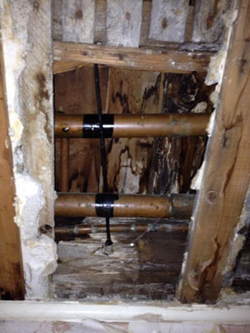 insure property with active Knob & Tube electrical Wiring. This photo shows a live , poorly insulated, wire that was arcing(sparking) when copper plumbing was added to the home. What option would you choose?The quick fix and Electrical tape on the pipe or the real fix? Remove all old Knob & Tube wiring. A house built with patches will eventually crumble or burn. Don’t let anyone shortcut your families safety.
insure property with active Knob & Tube electrical Wiring. This photo shows a live , poorly insulated, wire that was arcing(sparking) when copper plumbing was added to the home. What option would you choose?The quick fix and Electrical tape on the pipe or the real fix? Remove all old Knob & Tube wiring. A house built with patches will eventually crumble or burn. Don’t let anyone shortcut your families safety.


